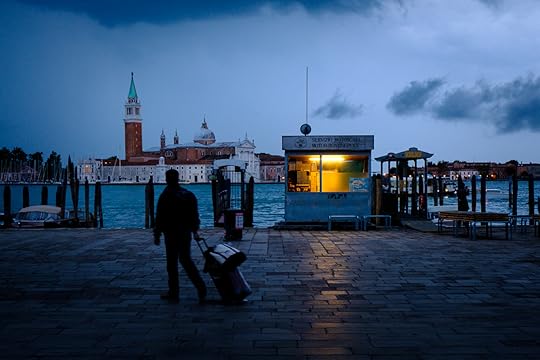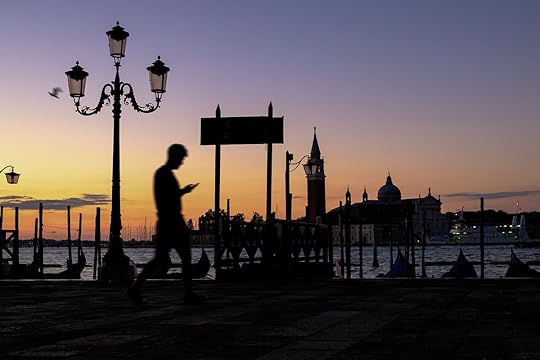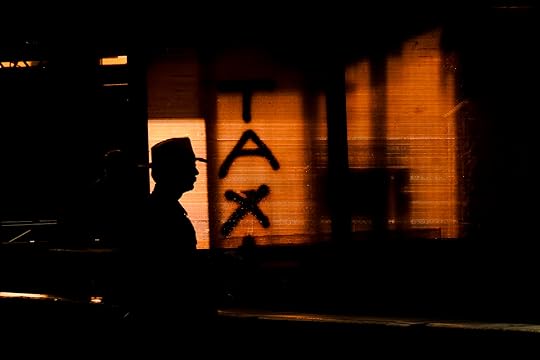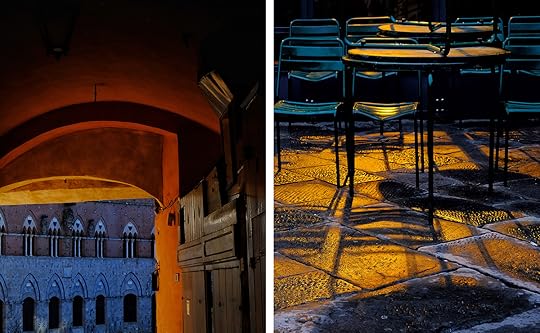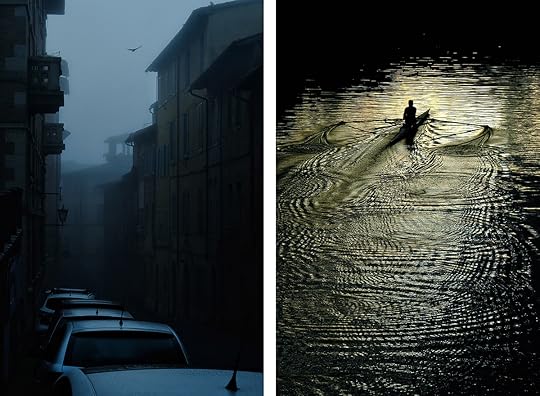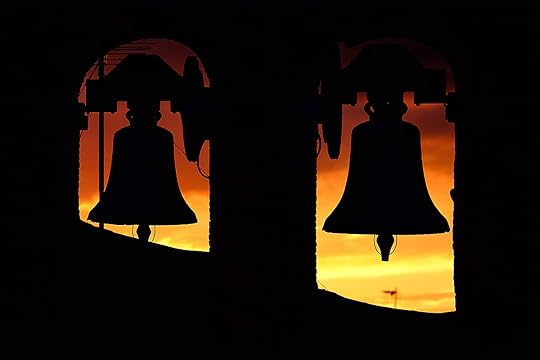David duChemin's Blog, page 6
January 17, 2017
Your Most Powerful Photographic Tool
Among the first words I said at an exclusive little photography workshop on the east coast last year were: “I don’t give a sh*t about your photographs.” They were not my best-chosen words ever. But I got their attention, and that’s always half the battle. The other half of the battle was trying to convince them I wasn’t a jerk and they hadn’t wasted their money coming all that way to listen to me. What I meant was, “I care so much more about you, the photographer, than any one technique you might learn or any specific image you might make this weekend.” I probably should have led with that.
Somewhere in the back of my head was a thought I was having a hard time expressing. Let me try again:
The real work of making photographs is not exposing and focusing your image well. That stuff is the price of admission. It is assumed. That’s just learning to use a camera and it’s not mastery, just a necessary first step. High school photography students nail that in one semester.
The real work, the labour of years, is in learning to tell a story, learning to cram a heart-full of emotion or a brain full ideas into our impossibly limited little frames. It’s in learning not to focus a lens but to focus attention. Learning to expose our souls, not just a negative. Learning composition, and how to play with balance, tension, line, shape, colour, selection of moment and gesture.
Add to that the ability to create a body of work, to make a great print, to wrestle with your creative process daily, and having the humility and determination to do it over and over again. It is learning to speak with a very specific kind of language to the people that read our images, and say things that matter.
It is connecting and engaging and worrying more about inspiring than being inspired. It is in understanding emotional range more than dynamic range. It is being open and receptive and patient. It’s not about the camera or the settings; it’s about the photographer. The most powerful tool of your craft is not your gear. It’s you.
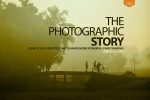 This week I released The Photographic Story, How to Use Storytelling to Make More Powerful Photographs. If you’re at the point in your craft where you’re hungering for something more than “Nice capture, man” from the people who experience your work, this digital book and its companion video might be a great next step, and until the end of January 25th it’s yours for 25% off – just $15. My way of saying thank you for your continued support and trust.
This week I released The Photographic Story, How to Use Storytelling to Make More Powerful Photographs. If you’re at the point in your craft where you’re hungering for something more than “Nice capture, man” from the people who experience your work, this digital book and its companion video might be a great next step, and until the end of January 25th it’s yours for 25% off – just $15. My way of saying thank you for your continued support and trust.
Share this Post, Share the Love
January 9, 2017
Better Stories, Better Photographs.
The most powerful photograph is the one that connects with both the heart and mind of the reader. It’s the image that our imaginations keep returning to, and keep asking questions about; the image that stirs something in our emotions. That captivation is what prolongs our experience of the photograph, it’s what grabs our souls and won’t let go. It’s more human. And more than ever we need photographs that are deeply human, empathetic, insightful.
We’re drowning in megapixels – beautiful, sharp, megapixels – by the billions. The more photographs that get flung into the world, mostly online, the harder it’s going to be for any single image to connect, to resonate, and to never let go. Our best hope is that we can push past the size of our photographs and create depth. Not bit depth. Emotional depth. Depth of connection. Those will be the images to which we cling, the images that resonate with us and stick.
Once you’ve got your exposure figured out, and can competently focus an image, two things the camera is getting very good at doing, the only thing left is to create something that connects. That’s the human task, the part that requires creativity, soul, and something to say. We do that with composition, with colour, with our choice of moments, and we do it with storytelling.
“Our best hope is that we can push past the size of our photographs and create depth. Not bit depth. Emotional depth. Depth of connection. Those will be the images to which we cling, the images that resonate with us and stick.”
Human beings are storytelling creatures. We find meaning there, we find hope. It’s how we change minds and stir hearts to action. And knowing how to use your camera won’t help you with this. This part of the photographic journey is done with the heart and the imagination, because it’s the heart and the imagination to which we speak on the other side of the image.
In all the gloom about how hard it is to make a living as a photographer, and how de-valued our craft has become, there is hope. That hope is that we have always, and will always, hunger for stories. That hunger is hard-wired into us. You couldn’t stop it if you tried. For the photographer wanting to find deeper relevance and connection to his audience, there are ways to do that powerfully, one of those is storytelling. The more human, the more honest and vulnerable the better.
What story does your work tell? With what bigger story do you feed your audience – on gallery walls, your portfolio, your Instagram feed? How could you tighten that story, edit it down, reduce it to its most powerful elements? How can we make it a little more universal and a little less about ourselves?
Next week I’ll be releasing my latest project, a resource I’ve been working a long time on called The Photographic Story, How To Use Storytelling To Make More Powerful Photographs. It’s an eBook and Companion video designed to help you understand the elements of storytelling and how they can be used to tell more compelling visual stories. I hope it’ll help you push a little deeper in your craft and spark some new ideas. The timing is intentional because the next day I get on a plane for Kenya. I’ve got a couple safaris to photograph then two weeks up north to continue my work with the BOMA Project. So you won’t hear much from me until I’m home and this will give you something to work through. When I get back I’d like to spend some time on Facebook answering your questions and discussing the book, so I’ve set aside February 23 for that. You write questions – about storytelling or any other photographic topic, and I’ll reply as best I can.
Share this Post, Share the Love.
December 29, 2016
Ten More Ways (To Improve Your Craft)
Several years ago I wrote a short book called TEN. Ten Ways to Improve Your Craft Without Buying Gear. It was wildly popular, in part I think because it’s easy to wrap our brains around doing ten things rather than a hundred. It’s manageable. Also because the word “eleven” is hard to say for some people. You can get that book here, and the follow up which is cleverly titled, TEN MORE, here for free. But assuming you’ve read those and were hungry for more, and were just now wondering what ten pieces of unsolicited advice I might now give for any photographer who cares to listen, here goes:
One. It’s all about the human experience, not the technique. That’s why we pay attention to composition and light and emotion. Make it alive. That takes craft, to be sure, but mostly it takes taste, and courage, and vision, and those things take time. So put in the hours. Learn from others. Study other photographers who make work that, to you, is alive.
Two. Ultimately you will hear a lot of voices, but you have to figure out which ones you want to listen to. Listen. Learn. Then be willing to go in another direction if that’s where your curiosity and your instinct lead you. If you want to create something unique, something authentic, you need to learn to ignore everybody but learn from them too. That’s also a balance that comes with time.
Three. Photography is easier than we all make it seem. The magazines and books want to keep you on the hook for more and more advice, the next great secret, the next top tricks. Learn to expose well. Learn to focus. Study composition like your life depends on it. Now go make photographs. You will learn more from cutting the apron strings and experimenting on your own, and you’ll find your voice faster.
Four. Think in bodies of work. A series of 3 to begin, perhaps. Then 10. 20. A strong body of unified work is much harder than a dozen single images that are all over the map. This approach will force you to think deeper.
Five. Make some work, serious work, great work, work that everyone should experience. But don’t share it for a year. Build it. Live with it. Play with the sequence. But don’t put it out there for a year. It’ll do you good to incubate it without hearing the voices of others.
“Don’t chase the shot. Chase the magic. “
Six. Work with tighter constraints. This year I know several photographers going back to their roots and working mostly in black and white. It’s a return to line and form, to tone and moments, without the seduction of colour. I’ve sworn off tripods and long exposures for a while. And I have specific projects I’m already creating tight constraints for. This will force you into more creative thinking.
Seven. Don’t chase the shot. Chase the magic. Chase the experience. Life is too short and even the best photograph you make this year is likely to be eclipsed by something you make next year. So put your time first into great experiences, the photographs will come out of those and they’ll be stronger for being rooted in something you really care about.
“If you want to create something unique, something authentic, you need to learn to ignore everybody but learn from them too.”
Eight. Learn what it takes to make a great story. Too many photographers lean on cheap gimmicks and nudge the saturation slider in hopes that just a little more visual sugar will make the image a little more delicious. And in so-doing we kill our taste buds. It’s great for a quick hit but it leaves us empty. Understand the elements of story and how you might use those to strengthen your work.
Nine. Print your work. You don’t need another lens as much as you need to print your work, hold it in your hands, and live with it. Printing will make you a better photographer, and it will help you fall in love with the photograph more than the gear with which we make them.
“Make this year the year you put your soul, as vulnerably, as unfettered as it can be, into your work, and your life.”
Ten. Study the Masters. Once a week, or once a month, pick a new photographer – find one – ask your friends who they love – and study them. Read about their life, study their work. What was important about it at the time? Why does it succeed for you? Why does it not? How did they use visual language and composition? What can you learn from the way they thought? You can do this for free online, but if you can, budget for a book each month – a book of photographs. At the end of the year you’ll have 12 books full of magic, inspiration, and better lessons you’ll find in those magazines promising tips and tricks.
This is a beautiful, powerful craft. It has such possibility. We need it now more than ever. And now more than ever we need to approach it with heart and soul and the will to walk away from being dilettantes and dabblers. It’s too good, too beautiful, for such a trivial approach from those who claim to love it. There is so much more to it than getting edge to edge sharpness or great bokeh. We can want so much more from our images than that they be free from chromatic aberration or that they get good likes on Instagram. Make this year the year you put your soul, as vulnerably, as unfettered as it can be, into your work, and your life. Most of all, do it with love. Be an amateur – a lover – in every frame you make, every print you sign, every body of work you conceive.
And don’t you dare use f*cking white vignettes.
For the Love of the Photograph,
David.
Share this Post, Share the Love.
December 23, 2016
2016
What a year. It’s not over yet but as I’ve spent 36 hours on the Nautilus Belle Ami, in each direction, heading out over the bluest water to dive the Revillagigedo archipelago, almost 400Km southwest of the southernmost tip of Mexico’s Baja peninsula, I’ve had loads of time to reflect. Here are a couple of those reflections, and a handful of images that reflect some of my dearest memories of this year.
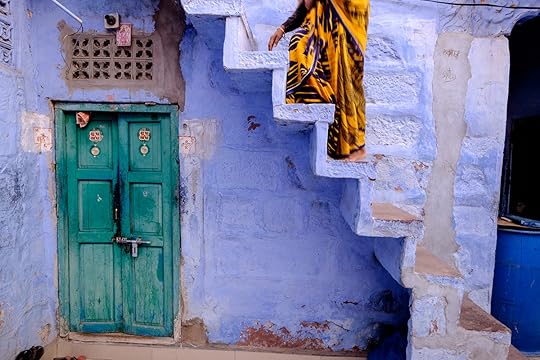
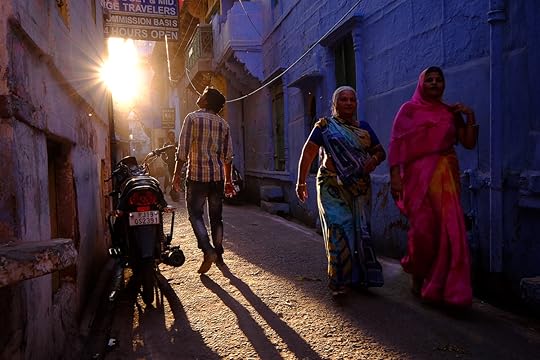
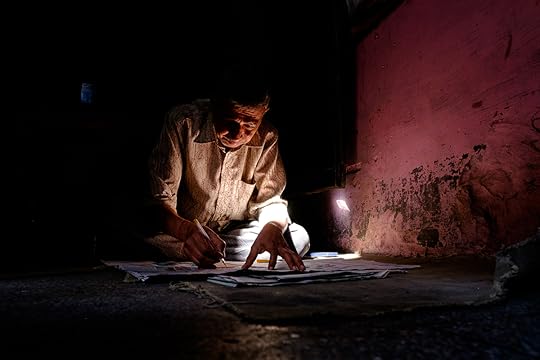
This year I travelled to Kenya, Tanzania, India, Turkey, Italy, England, Portugal, New Zealand, Australia, Mexico, as well as trips across Canada. I photographed sea lions on BC’s coast, Grizzly Bears up near Alaska, and giant mantas in Mexico. I led 4 Mentor Series Workshops in Venice, Florence, Rome, and Rajasthan, spoke at events across Canada, and saw my first book, Within The Frame, get re-published as a beautiful new second edition. I wrote perhaps a hundred blog posts, dozens of articles, and saw one of my favourite books, A Beautiful Anarchy, find a new publisher and go back into print.
By June I earned my Master Scuba Diver certification. And before the year turns, my next book, The Soul of the Camera, will be done, edited, and in the hands of my publisher, ready for a spring 2017 release. And along the way I’ve made some photographs I’m really proud of. I am incredibly grateful for all of it.
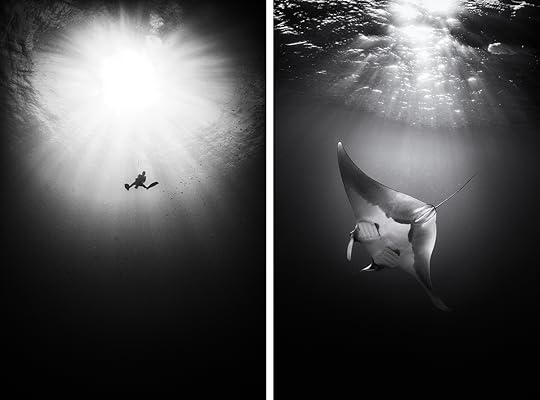
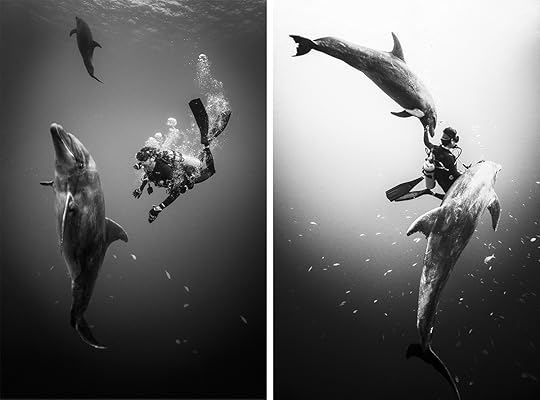
This year, like every year, unfolded all on its own. I never saw it coming. I usually don’t. The best of this life seems to come out of nowhere, both the good and the bad. 6 years ago, single and happily so for the first time in my life, the woman of my dreams walked into my life in Italy. A week later I walked off a wall. One has been more enjoyable than the other, but both have changed my life and I expected neither. I talk a lot about living, and creating, intentionally. That’s mostly in the way we react to what comes our way, setting the sails as best we can, and then aiming for a new spot on the horizon. But there is always the unknown, and it brings with it so much possibility.
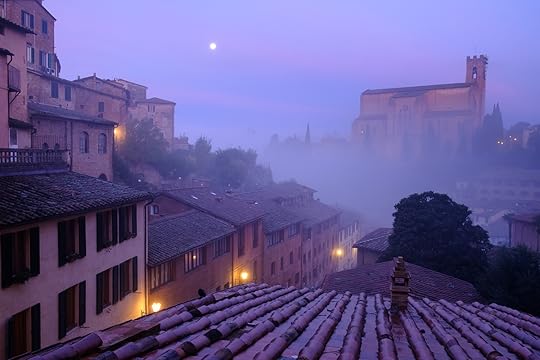
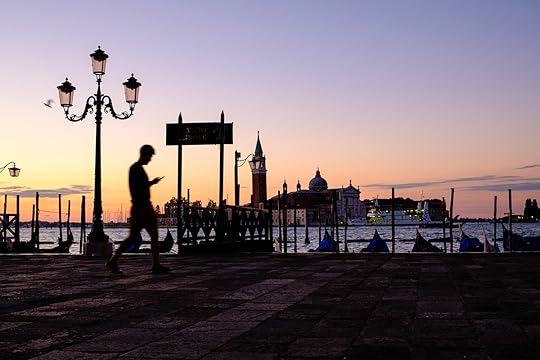
Possibility is my new favourite word. If last year I took the word “Intentionality” into the new year, this year I’m taking “Possibility.” There is so much potential out there, so many things coming our way, all of them unknown to us. All we can do is be open to what comes, to ride the waves that come at us. That’s what it means to live a creative life – to take the raw materials and make something of them. It applies to your business, your family, your art, and your soul.
The possibility is there for you to make something extraordinary of this coming year. How, I have no idea. I don’t even know what my year looks like, despite it being so heavily planned I’m not sure I have more than 3 weeks at a time at home. I put the big rocks in so I have some sense of what the year looks like, but then the waves hit the shore, jostle some things around, fill the cracks with smaller stones, a few shells, some sand, some weird little things dragged up from the depths. Only in hindsight is there really any order to it.
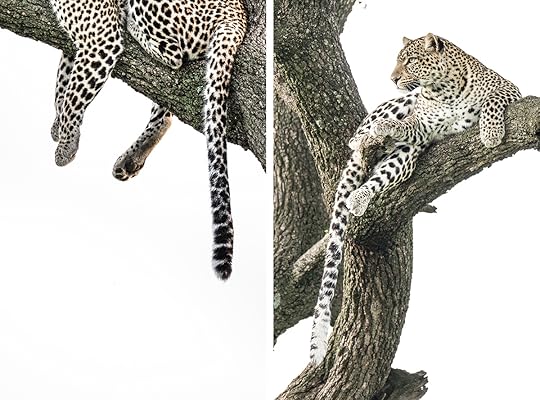
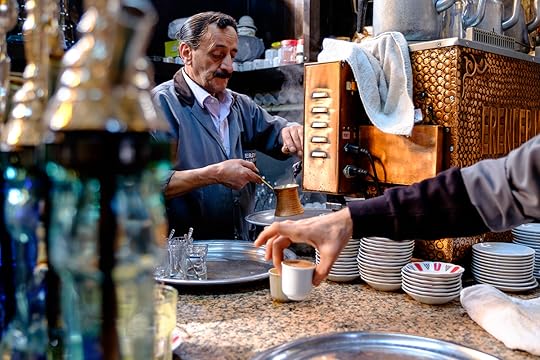

I almost wished a friend Happy New Year in an email this morning, and then I took it back. Instead I wished for him, as I do for you now, a year filled with possibility, with curiosity, with peace and health and every good thing.
I hope the waves bring you interesting things, that they bring you many possibilities. Whether you chose to be happy as you sort through it, as you hop back when the waves come too fast and flood your boots, or when unexpected things – whether at first we judge them good or bad – wash ashore, that’s your choice. I hope you’ll see the possibilities in them, and embrace them with as much humanity and depth, laughter and tears, as you can, and then turn them into something equally unexpected, including photographs.
I hope you leave your fingerprints all over each day of this coming year, and live it deeply, whatever comes.
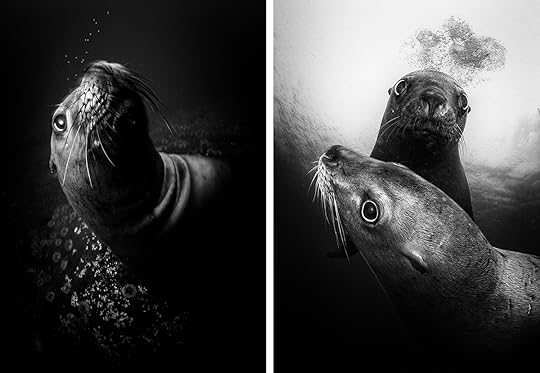
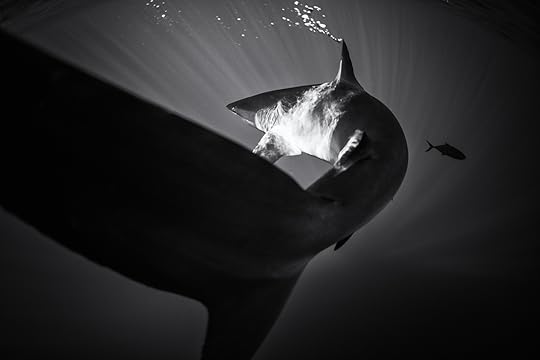
I’m taking the rest of the year to read some books, be with the ones I love most in this world, drink some wine, and dream of the coming possibilities. See you in 2017.
December 9, 2016
Courage & Gratitude
I woke up this morning, too early thanks to jet-lag, to find Victoria lying under a rare blanket of snow and silence. We got home about 36 hours ago, a day late thanks to fog in Lisbon where we spent a week in driving rain while I tried unsuccessfully to fight a cold. Yesterday I spent the day packing gear for another trip back to Baja to spend time in the water with mantas and sharks before coming home just before Christmas and my 45th birthday. Things are full, and busy.
I don’t believe there’s a secret to life. Life is meant to be lived, not figured out. I’m happy now allowing others with the inclination to do so, to find the “answer to the meaning of life.” I think we make that meaning. Our contributions, the way we live and love and react to the tides of time and circumstance. That’s what gives meaning. Life is in how we react, because that’s the one thing we control. That’s where concepts like forgiveness are so powerful, they return control to us. They give us the dignity of causality in our lives, whatever un-controllables come our way.
I think that’s one reason many of us find the creative life so compelling, so impossible to say no to. It gives us a hand in taking what we’ve been given, what we see and feel deeply, all the hurts and un-explainables, all the joys and wonder – and it lets us respond.
If there were a secret to life, if we were to speak in those terms, then it has something to do with our creative response to life itself. Your craft might be writing, photography, dance, or philanthropy – that’s not what matters. It’s that you respond, that you engage, with life. That’s where we find, and share meaning. The tools of our creativity are not in the craft. They’re deeper. In just the same way the tools of the photographer are visual language, composition, our choice of moments – not the camera – it is courage and gratitude, among others, that are the true tools of the creative soul.
At no time of the year do courage and gratitude seem more needful than now as we head into holidays of all kinds. Courage to move forward into another year with unguarded hearts, even though this year and the loss it brought, may have given us plenty of reason to wall ourselves up forever. Courage to be more vulnerably ourselves than ever before. Courage to stand for, or against, things we once hoped we’d never have to stand up for, or in resistance to. Courage to let our voices be heard. To stop seeking perfection and start desiring so much more: humanity. And gratitude for the chance to do so. Whatever 2016 has been it has also been a chance to rub the sleep from our eyes, to wake up to our self-satisfaction, to be reminded of things vital and necessary, beautiful and horrific, and of our role in fighting for, and against the things we must. Art has always been one way we have done this.
We need courage and gratitude now more than ever, they are the way in which we will respond to the unknown and the ineffable. Without them we will perish in our boredom, our fear, our complacency, lulled to sleep and apathy by shiny trinkets and the rush of acquisitions that this holiday time so easily becomes. We can let it be that. We can let our art be that, too. Safe. Effortless. All things for which we need neither courage nor gratitude. But I think we can do better. I think we hunger for more, and for deeper, neither of which come easily.
This is often a quiet time for me, and it will be again. But I don’t want this time to go forward without thanking you for your role in my life and the chance you give me to do what I love. You push me to be the best I can be, to keep learning, to question my assumptions, and to practice what I can’t seem to stop preaching. You give me so many reasons to be grateful and so many examples of courage. 2017 is going to be a year to double-down. Without courage and gratitude that should scare the shit out of all of us, with them it should add joy and purpose – spark and fire! – to the struggle. I have no more idea what 2017 will bring than anyone ever does, but I can control how I react to every moment of it and the more of us that choose to love more deeply, to reject fear, to find and instigate reasons for laughter, to create more honestly (if less perfectly) and with more soul, the better.
The Christmas narrative, the original one without Santa, has the angels proclaiming peace on earth. I’m beginning to think it was less a promise and more a declaration of possibility. A hope. Maybe even a pipe dream. Maybe it just reflects the longing we all share. Or maybe it’s a question that hangs in the air, asking us what we’re willing to life, love, struggle, and create for. Whatever it is to you, it comes with neither courage nor gratitude. No good thing does.
However you celebrate this holiday, Merry Christmas to you all. I wish you deepest love and brightest light.
Share this Post, Share the Love.
November 19, 2016
Stoke the Fire
Sometimes you lose the fire. Sometimes, after years of loving something, you can’t find the spark. I’ve had a couple photographers recently tell me they’ve lost it, that they awoke one morning to find their groove had become a rut and they felt trapped and directionless. It happens. And sometimes the answer is just pick up the camera, get out there and see if the muse doesn’t just catch up with you. Sometimes she’s a few steps behind, waiting to see if you’ll just get out there and do the work.
And sometimes, she’s just completely f*cked off. Nowhere to be found. Sometimes the last thing you want to do is make a photograph.
Put the camera down.
Life is too short to be bound by the shoulds and the ought-tos. It is too beautiful to let yourself feel shame or guilt or fear about the thing you love, even if that thing is also your bread & butter. If you do this for a living you might not have the luxury of all the time in the world in which to dig yourself from this rut, but you damn-well better because these bills aren’t going to pay themselves. So these thoughts might apply to you as well, just a little more urgently.
Our creativity depends on so many factors, a solid work ethic being high among them. But it also depends on curiosity and vision, on that spark if not on that fire and if you’re down to embers, it might be worth stopping long enough to fan those embers to flame again.
Without the artist there is no art. You have to protect her. You have to nurture him. Put the camera down. Go for a walk in the woods. Go find some new thing to learn: juggling or cooking or the French Horn. Take a breath. Hell, take yoga and learn to breathe again. Or pick up an old film camera and take on a new project that’s so divergent from what you usually do that you feel a little lost and unsure of yourself, but excited to try something new.
Ruts are just grooves that got a little too deep. Don’t just lie there, change direction. Go the other way. We’re probably there because our groove became safe, became easy, and we’ve a tendency to camp out in safe, easy places. But what’s safe and easy isn’t always good for us, at least not for long. Our creativity needs something to push against, something to explore, some unknown and unpredictable path to poke its head around. Our souls need new problems to solve and much as we fear the next step, now’s the time to take it.
Do something hard. Challenging. Something you’re afraid of. Find another rutted artist and collaborate your way out, or find someone who’s experiencing a really fruitful time and go spend some time with them and see if the fire doesn’t catch a little.
Whatever you do, protect that spark and don’t let it go out. But remember, the spark is not a photography spark. It’s a creative spark, a soul spark, and it could be that the best way to tend it right now is by giving it something different to burn. Write a poem, even if it’s a truly bad poem. Write a song. Take a ceramics course and learn to throw a pot. Learn to paint and explore a new relationship with shape and colour.
When creative people come to me looking for ideas the best I can do is ask them the same questions I ask myself when it feels like the fire’s dying: What are you reading? What new project have you been wrestling with? Who are you spending time with? What are you challenging yourself with? When’s the last time you went to a museum or a concert or a gallery? If you haven’t done something different for a while I have a feeling I know why you’re in that rut. Getting out isn’t hard, it’s just scary.
The spark is still there. It could be you just haven’t given it anything new to consume for a while. Creativity works on an input/output basis. Just like fire, it needs something to burn, if you expect it to produce any heat. You’ve got this. You’re not broken. You haven’t made your last good photograph. But you might have to put the camera down and head out to the wood pile. It’ll be there when you’re ready.
I just got news this week that my book about creativity: A Beautiful Anarchy, When the Life Creative Becomes the Life Created, has been re-printed and is available on Amazon. It’s got a new cover by MoMA artist, and a hero of mine, James Victore, and it’s available for pre-order now – they should be shipping in the next week or so. If this article resonated with you, this book might be helpful. I know it has been for many others. You can find A Beautiful Anarchy on Amazon and on Barnes & Noble.
Share this Post, Share the Love.
November 13, 2016
Choosing Gear
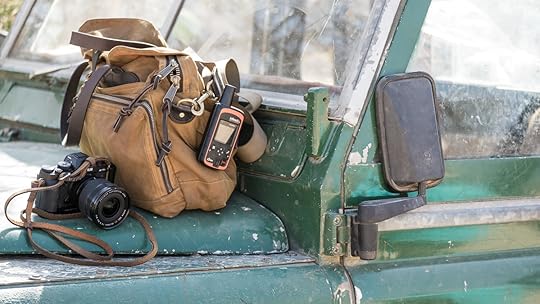
It seems every photographer has a gear list on their blog. It’s so much silliness. Some do it to show how pro they are. Some to show off. But no one seems to talk much about why they choose their gear and that seems to be the more important question. There are so many great cameras out there, by all brands. The question “Is it good enough?” is almost irrelevant now. Below is a list of the gear I’m currently using, but that’s less important than understanding why I have chosen what I have.
I want cameras that are light, take a good beating, and produce great images. I like the weather-sealing of the Fuji XT bodies and their flip out screen. The in-camera live histograms are almost essential to me now and allow are to work much faster. I can use the Fujis, most of the time, faster than any camera I’ve ever used. I use them on full-blown assignment work in terrible conditions and they perform wonderfully. And I can put a bag with 3 bodies and 5 lenses into my Think Tank Airport Essentials (this is my Go-There bag) and almost always remain under the strictest carry-on limits.
My criteria for cameras, and the questions you might want to ask yourself, are these:
Do I like the look of the images?
Are the image files large enough for me? Too small? Too large?
Do I like how it handles and feels?
Can I carry it? All day?
Can it keep up with the work I do? This might mean speed of focus, it might mean insane high-ISO performance. I don’t need those, but I do need it to be rugged.
Does it give me access to the lenses I need?
Can I afford two of them?
The questions I ask myself when choosing a lens are these:
Is this a focal length I need, and for what?
Given the intended use, does it need to be fast (f/2.8 rather than f/5.6)?
Given the intended use does it need to be light?
Does it need to be weather-sealed?
Is it a good lens? You will define this for yourself, I just want to know if it generally gets solid reviews. Edge-to-edge sharpness isn’t something I fuss about.
Can I afford it?
Notice how the questions are all about how the gear relates to you and your needs, and none of them are about brand? This is a personal decision. No pro can help you with this. Know your needs. (If you don’t know your needs then it’s likely that any camera will work for you. Use something, anything, until you do know your needs.) Go to the store and hold the camera. Play with it. And in the end know that no matter what camera you buy it will have limitations and if you’re smart you’ll do what creative people always do: you’ll leverage those constraints, stop bitching about your gear, and go make something amazing.
If we spent more time analyzing our photographs as we did analyzing gear we’d make much better photographs no matter what that gear is.
Remember, please, that we are working with gear now that is so far beyond what past masters of this craft ever imagined and most of us have yet to touch the depth and humanity of that work. The real tools of our craft are not the camera and lens: they are mood and composition and the visual language of the photograph. Spend more time learning those and no matter what camera you use, you’ll make compelling photographs. (Read this post: The Photographer’s Tools)
This is the gear I use on a daily basis when I’m actually photographing, bearing in mind that things change a little as new technology emerges. Where I could I linked to the product on Amazon.
Travelling Gear
Cameras
Fuji X-T1 bodies
Fuji X-T2 bodies
Fuji X-Pro2 body
The X-T2 is my current camera of choice, with X-T1 or X-Pro2 bodies as backups. When my second and third X-T2 bodies arrive (back-order issues right now) that’s what I’ll use full time and I’ll pass my older gear on. The X-T1 bodies are great but the changes in the X-T2 are worth the upgrade to me: the dual card slots, larger 24mp sensor which is my personal sweet spot for sensor size), and improved ergonomics make a difference to me. I’ve been asked, Why not Sony? I just don’t like the feel of the Sony. I prefer the aperture dial on the Fuji lenses, the ergonomics are much more old-school and analogue-feeling to me. As for full-frame, that’s no longer an issue for me. It just doesn’t matter for the kind of work I now do.
Lenses
Fujinon 10-24mm – Found on my camera most of the time.
Leica 21mm (discontinued)
Fujinon 18-55mm – This is the least sexy lens I own but it’s light and sharp and I adore it. It’s a great all-around travel lens.
Fujinon 56mm – Beautiful portrait lens. There are two versions of this lens, I prefer the cheaper one.
Fujinon 55-200mm – I don’t always use it but it almost always comes with me now. A lot of reach in a small package.
Fujinon 100-400mm (safari and wildlife trips only)
Fujinon 1.4x, and 2x convertors (safari and wildlife trips only)
I almost always use two bags. One is my Go-There Bag, used to get my gear there but not usually great to work out of. I use the Think Tank Airport Essentials. The other is my While-There Bag: Usually a leather satchel or my Filson 24-Hour Tin Briefcase. Light, no padding, looks like a normal bag and is way more comfortable than a camera bag. If it’s the leather satchel, I just pack it flat in my suitcase, it’s pretty light. If it’s my Filson bag I use that as my other carry on, and move things around once I get to where I’m going.
Other Stuff
I carry 2 Think Tank SD Pixel Pocket Rockets filled with 64 and 128GB SD cards, a mix of Lexar and SanDisk. These are the ones I use now – right now 2 of them for $65 – that’s a lot of memory! I don’t worry too much about cards failing. It has yet to happen and I’m comfortable with 64 or 128GB. The labels on the cards face out when they’re formatted and ready to use, the face in when they’re used and need to be downloaded.
I also carry 2-3 Think Thank DSLR Battery Holders – they’re a little big for the Fuji batteries, but they work and I like to stay organized. The battery contacts face down when they’re charged and ready, and face up when they’re spent.
I don’t travel with a tripod much these days, but when I do it’s with the Gitzo Ocean Traveler – this tripod is discontinued now, probably because it was so silly-expensive, but this size, weight is a good compromise for me, especially with the smaller mirrorless cameras.
Underwater Gear
Nikon D800 bodies – If I were doing it now it would be D810 bodies – they have much larger buffers!
Sigma 15mm Fisheye
Nikon 16-35mm
Nikon 105mm Macro
Nauticam Housing
Nauticam Dome Port (acrylic)
Zen Dome Port (glass)
2x Sea & Sea YS-250Pro Strobes (These are now discontinued but they’re powerful and fast!)
My underwater gear goes in a ThinkTank Photo Logistics Manager. It’s huge.
Underwater photography has been a massive learning curve for me but such an intense joy and challenge. When I first started I wanted to make my Fuji system work but for a bunch of reasons it just didn’t. The housings weren’t up to the task and the lens selection wasn’t what I wanted at the time. It was a compromise. And really, no matter what gear I chose, to do it right was going to require a ton of it, so going light wasn’t really an option no matter what I did. If you want to go underwater with your cameras my suggestion is to find a dive photographer (huge thanks to Jason Bradley for doing this for me) who is willing to show you the whole kit from start to finish – how to take care of O rings, how to seal housings, teach you what you need to know about strobe choice and placement – books are good but hands-on is better. Barring that, go to a shop that specializes in dive photography and learn as much as you can. Look at Reef Photo as a starting place.
Questions?
November 4, 2016
A Failure to Communicate
A recent article on F-Stoppers, written by a wedding photographer, starts with the title, Why I Can’t Use a Mirrorless Camera Professionally. Anytime an article starts with “Why I Can’t…” I prepare myself for a personal defence of a position that should otherwise be titled, “Why I Won’t…” and I brace myself for a list of limiting beliefs. Now I don’t know the author, Vanessa Joy, but her work is beautiful, and I don’t care what kind of camera she uses, or the reasons for which she does or doesn’t use that gear. But the reasons she gives tells me she’s missing some larger truths.
The gist of the article is simple. When she sees someone making photographs with a smaller camera she thinks, Oh my gosh, how cute! She assumes clients will think so too. The article is about perception, nothing more. And perception is important, I’ll give her that. Hell, in the world where craft and commerce meet, it’s everything. But she is missing the chance to create that perception, make it about bigger things, and drive those conversations with clients.
What we’ve got here, to quote the 1967 movie Cool Hand Luke, is a failure to communicate.
The reason I’m writing this article at all is because I’m hoping you’ll see a bigger picture. I’ve talked about this stuff before and I know I’m preaching to the choir, but hell, I love this choir I’m preaching to. You can do better than this limiting (self-limiting) paradigm that reduces you as a photographer to the kind of camera you use. We all can.
When we allow the conversation about photography to be about cameras and not photographs, we have lost control of the narrative. Sadly, it’s photographers themselves who are driving this conversation off the road.
If a client hires you because of the size of the camera you use it’s a clear sign that she is hiring a commodity – just another photographer – not a brand. That client might choose you for other reasons too. Price. The colour of your hair. Who knows. But she is not choosing you for the photographs you make. If, say, Annie Leibovitz showed up at wedding with a small Leica, or an iPhone, no one would blink an eye. They wouldn’t say, “Well, hell, if I’d known she was going to use her little girl camera I’d never have hired her.” Why? Because no one hires Annie for anything based on which camera she uses. Annie is a brand and she took a long time to become that brand but she didn’t get there by making excuses for which camera she could not, or would not, use.
This position, and I understand it but no longer subscribe to it, is based on fear. It is based on the belief that there are only so many gigs out there and we have to do everything we can to get our share. That’s why I’m writing this. Again, it’s not because I care what camera you use. But if you are choosing to make your decisions based on fear, you’re going in the wrong direction. Right now that fear is dictating what camera you use. But soon it will be driving your pricing down, and you’ll be taking gigs you know aren’t right for you, and you’ll be working with, and for, people you don’t like, people you know are not a good fit. That’s the lot of the commodity. It is not the lot of the brand, the photographer that tells a bigger story, that delivers such high value that no one can compete with them. It’s also a much harder road, so I get that.
There is a larger conversation here, and depending on how you look at it, it’s either a conversation about how hard it is to be a photographer right now, or it’s about the incredible opportunity that we have right now in a world where “everyone is a photographer.” It used to be that photography was inaccessible to most. The gear cost a lot of money. It was hard to master. Early films were a tricky beast. And if you could buy that gear and master the techniques, you could hang your shingle and make a living. The value you brought to the market was “This guy can make photographs!” and if I wanted photographs, I paid you for them. Simple.
The value proposition has changed. The scarcity has shifted. Everyone owns a camera. Despite the fearfully hand-wringing of the old-school that arrogantly fling terms like “faux-tographer” at the amateurs, a great many people can use those cameras very proficiently. It’s scary for them. No one is coming to them anymore because they can “use a camera.” What’s scarcer now is not access to gear, and it’s not the ability to use that gear. It’s how we use it. It’s vision. It’s the ability to tell a great story.
Use whatever gear you want to use. But don’t say “can’t” when you mean “won’t,” don’t let fear run your business or your creativity, and don’t believe for a moment that your big DSLR is getting you those gigs. Because everyone has a big DSLR, and someone else probably has a larger one, a shinier one, a newer one, one that looks even less cute than yours.
It is time photographers started having a more intelligent, human, creative, conversation about what we do. If the larger markets don’t take us seriously it’s because we have trained them how to see us and how to treat us. It’s not going to change anytime soon, so that great opportunity I mentioned is there for those who see it – to impress people not with the size of their camera but with the depth of their images, and their imagination, and work ethic, and any other thing that actually goes into making great photographs.
This is a confidence problem. It’s a communication problem. It is not a camera problem.
Let me repeat myself and clarify: I think Vanessa’s work is beautiful. She knows her craft. This article is not about Vanessa, nor is it an attack on her. I have a feeling we’d get along beautifully because she seems like a lovely person. My thoughts are directed towards the thinking that is behind the article. I think Vanessa could use any camera she wanted, and I think this is an opportunity to own that, not hide behind her choice of camera.
Share this Post.
October 30, 2016
Postcards from Rome
It’s Sunday morning here in Rome and the church bells are chiming. We woke this morning to our second earthquake in a couple days; a good sign that it’s time to go home. But what an amazing 5 weeks it’s been with students and new friends, lots of amazing meals and wine, and days to wander unknown streets looking for light, lines, and moments. When I get home we’ll announce the 2017 dates and details for the Italian Mentor Series for those of you who’ve been clamouring to get in or didn’t get a spot this year.
I also wanted to mention, because I’ve had a couple questions about it, that I’m splitting some of my blogging attention between my personal blog and the Craft & Vision Blog. Right now that’s where I’m putting the articles that are how-to driven, like:
Using Contrast for Stronger Images
Starting Your Next Personal Project
Four Ways to Make Stronger Travel Photographs
Four Ways to Tell Stronger Stories
You’ll also find great articles from other Craft & Vision authors and our In Conversation series highlighting inspiring photographers and their work. Check the entire C&V blog out here.
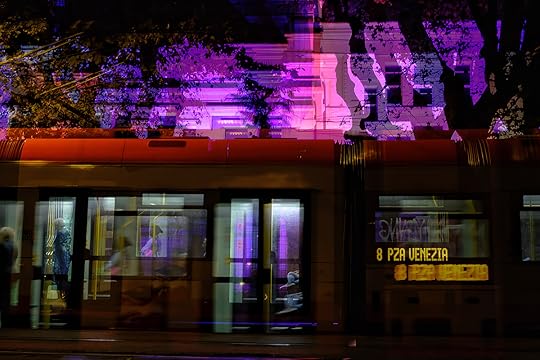
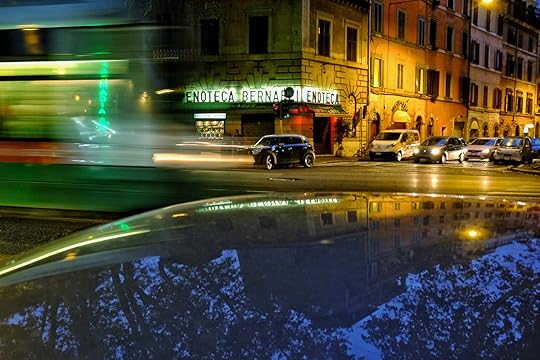
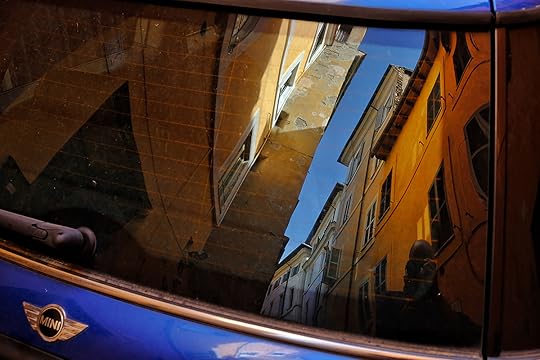

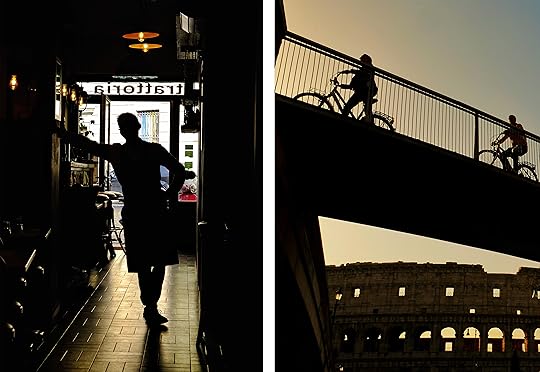
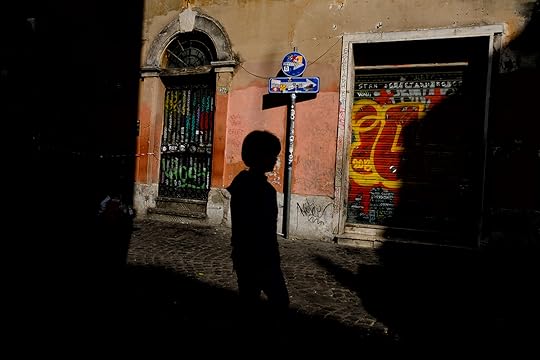
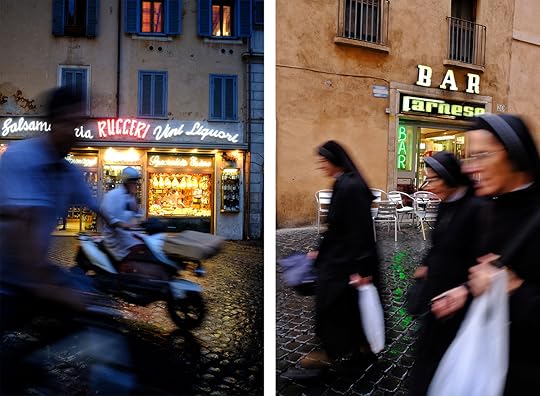

October 20, 2016
Postcards from Italy
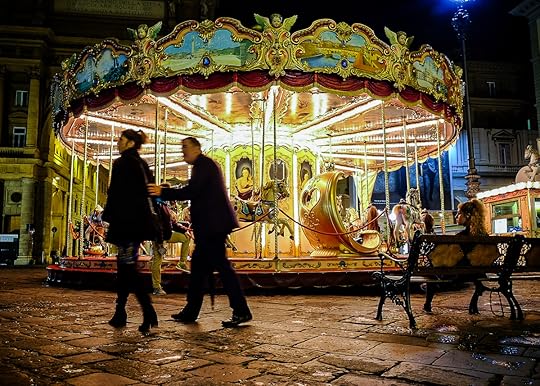
It’s been a while since I said hello, and the last time you heard from me was probably during the chaos of the 5 Day Deal over the last week. Thanks for your patience on that. Together we raised over $200,000 for 4 excellent charities, including The Boma Project with which I am so personally involved. This sale also funds my own pro-bono work for the Boma Project so for those of you that bought the bundle through my links – thank you, I’ll be with The Boma Project again this February.
I’m in Rome now, the last stop in a 5+ week adventure in Italy. We’ve done a one week Mentor Series Workshop in both Venice and Florence and are set to begin the Rome workshop on Saturday evening. When I get home in a few weeks we’ll be announcing the Italy Mentor Series trips for 2017. I can already tell you there will be two one-week workshops in Venice and we’re still thinking about the third. Rome? Florence? Siena? Find out in November. And if you want to be among the first to know, be sure you’re on the Workshops mailing list.
So I thought I’d say hello, show you some photographs from the work I’m doing, mostly focusing on colour, shadow, and the edges of day. These are all JPGs, mostly straight out of camera, shot with the Fuji XT-2 and the Velvia film emulation. I haven’t so much as looked at the RAW files yet so if these seem a little noisy it’s because they’ve gone from the camera to the iPhone, got a tweak of two in Snapseed, and then sent to the laptop for the blog. With such beautiful light and so much great wine, there’s just no time for computer work. Enjoy!

